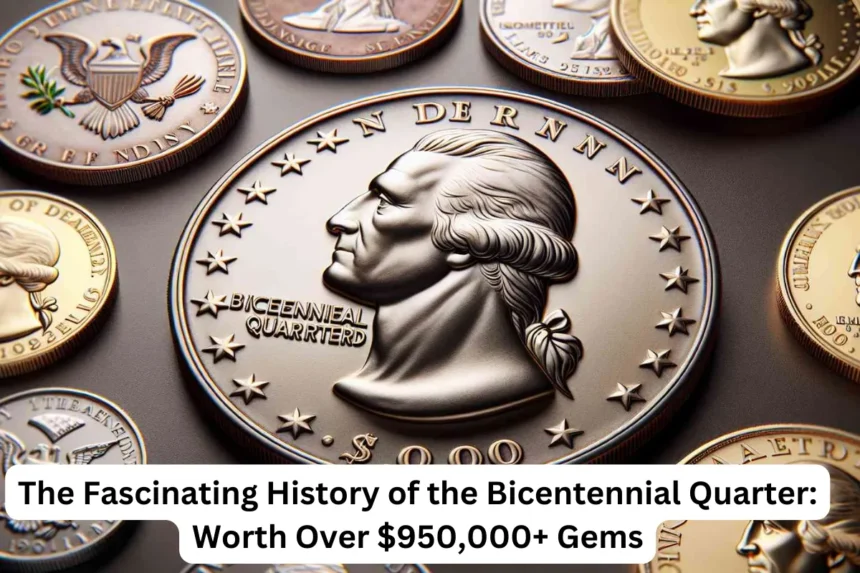In the world of numismatics, certain coins stand out not just for their intrinsic value, but for the stories they carry within their designs and the historical significance they represent. Among these treasures is the Bicentennial Quarter, a coin that holds a special place in the hearts of collectors and historians alike.
The Bicentennial Quarter was born out of a nationwide celebration of America’s 200th birthday in 1976. The United States Mint decided to commemorate this significant event by issuing a special series of quarters, featuring a unique design on the reverse side. The design depicted a colonial drummer on horseback, accompanied by the words “1776-1976” and the inscription “United States of America.” This distinctive imagery served as a tribute to the spirit of independence and the sacrifices made by those who fought for freedom during the Revolutionary War.
What sets the Bicentennial Quarter apart from other coins of its era is not just its symbolism, but also its scarcity. While billions of quarters were minted in 1976, only a small percentage of them were struck with the Bicentennial design. This limited mintage has contributed to the coin’s rarity and increased its value among collectors over the years.
One of the most remarkable aspects of the Bicentennial Quarter is its potential worth. While the face value of the coin remains at 25 cents, certain specimens have been known to fetch prices well beyond that amount. In fact, some Bicentennial Quarters have sold for over $950,000 at auction, making them some of the most valuable coins in existence.
The astronomical prices commanded by these rare specimens can be attributed to a variety of factors. First and foremost is their condition. Like all coins, Bicentennial Quarters are subject to wear and damage over time. However, those that are in pristine condition, known as “mint state” coins, are incredibly rare and highly sought after by collectors. Even the smallest imperfection can significantly diminish a coin’s value, making flawless examples exceedingly valuable.
Additionally, certain Bicentennial Quarters possess unique characteristics that further enhance their worth. These can include errors in the minting process, such as double strikes or misaligned dies, as well as variations in the metal composition or surface finish. Each of these quirks adds to the coin’s allure and can drive up its price among enthusiasts.
The journey of the Bicentennial Quarter from its humble origins to its status as a coveted collectible is a testament to the enduring appeal of numismatics. For decades, collectors have been captivated by the stories that coins tell and the tangible connections they provide to the past. Whether it’s the thrill of the hunt for rare specimens or the pride of ownership in a piece of history, the allure of coins like the Bicentennial Quarter transcends mere monetary value.
In conclusion, the Bicentennial Quarter stands as a shining example of the intersection between art, history, and commerce. From its inception as a tribute to America’s bicentennial celebration to its status as a prized gem worth over $950,000, this humble coin has left an indelible mark on the world of numismatics. Whether tucked away in a collector’s album or displayed in a museum, the Bicentennial Quarter serves as a reminder of the rich tapestry of American history and the enduring fascination of rare coins.

